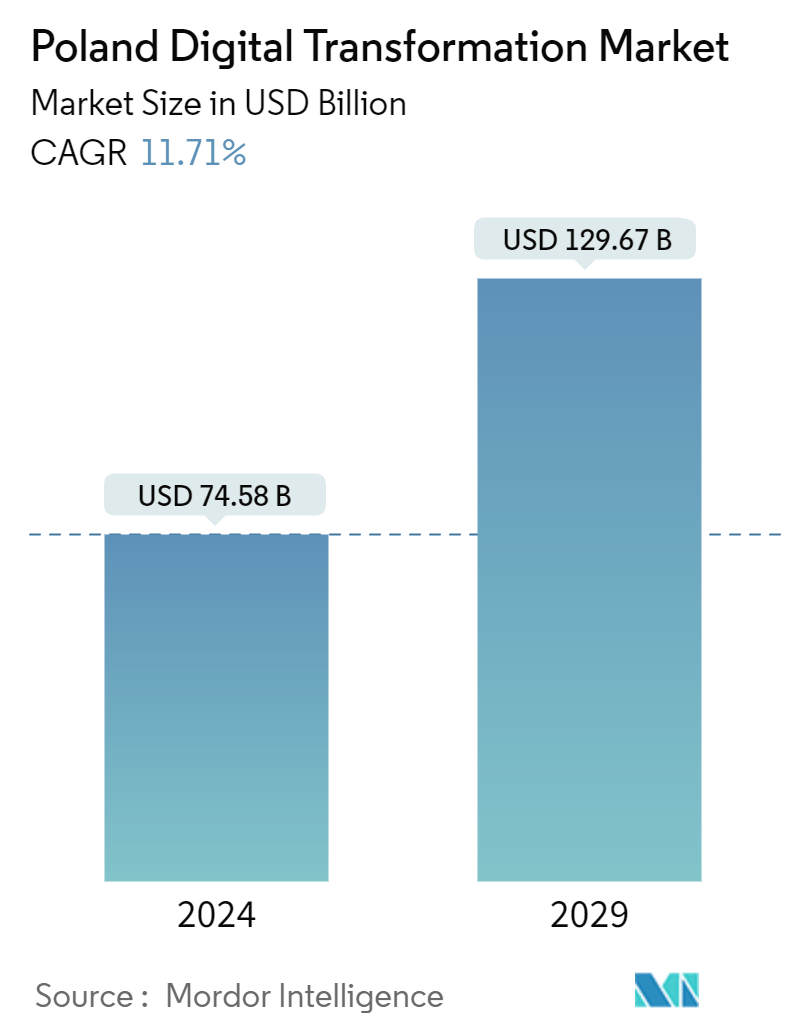Market Size of Poland Digital Transformation Industry

| Study Period | 2019 - 2029 |
| Base Year For Estimation | 2023 |
| Market Size (2024) | USD 74.58 Billion |
| Market Size (2029) | USD 129.67 Billion |
| CAGR (2024 - 2029) | 11.71 % |
| Market Concentration | Low |
Major Players
*Disclaimer: Major Players sorted in no particular order |
Poland Digital Transformation Market Analysis
The Poland Digital Transformation Market size is estimated at USD 74.58 billion in 2024, and is expected to reach USD 129.67 billion by 2029, growing at a CAGR of 11.71% during the forecast period (2024-2029).
- Poland's digital transformation sector is witnessing robust growth, propelled by concerted efforts from both the public and private sectors to modernize and digitize the economy. The nation is actively incorporating digital technologies to boost efficiency, foster innovation, and bolster its competitive edge.
- The Polish government has introduced multiple initiatives to bolster digital transformation. Notably, the "Strategy for Responsible Development" stands out as a cornerstone, delineating the nation's digital aspirations. Furthermore, the government is channeling investments into digital infrastructure, advocating for e-governance, and prioritizing digital literacy.
- Domestic enterprises in Poland are swiftly embracing cutting-edge technologies, including cloud computing, big data analytics, artificial intelligence (AI), machine learning (ML), and the Internet of Things (IoT). These tools are permeating diverse sectors like finance, manufacturing, healthcare, and retail, catalyzing innovation and operational efficiency.
- Recognizing the escalating demand for digital services, Poland is ramping up its digital infrastructure. The imminent deployment of 5G networks marks a pivotal leap, poised to elevate connectivity and pave the way for advanced applications like smart cities and autonomous vehicles. Concurrently, broadband internet penetration is on the rise, laying a robust groundwork for the nation's digital metamorphosis.
- While the market shows promise, it grapples with notable hurdles. Foremost among these challenges is the digital skills gap, marked by a scarcity of adept professionals capable of handling and overseeing cutting-edge technologies. Moreover, as businesses undergo digital transformations, concerns about cybersecurity escalate, heightening susceptibility to cyber threats. Safeguarding data privacy and fortifying essential infrastructure against cyber-attacks emerge as pivotal strategies in bolstering the digital economy's growth.

